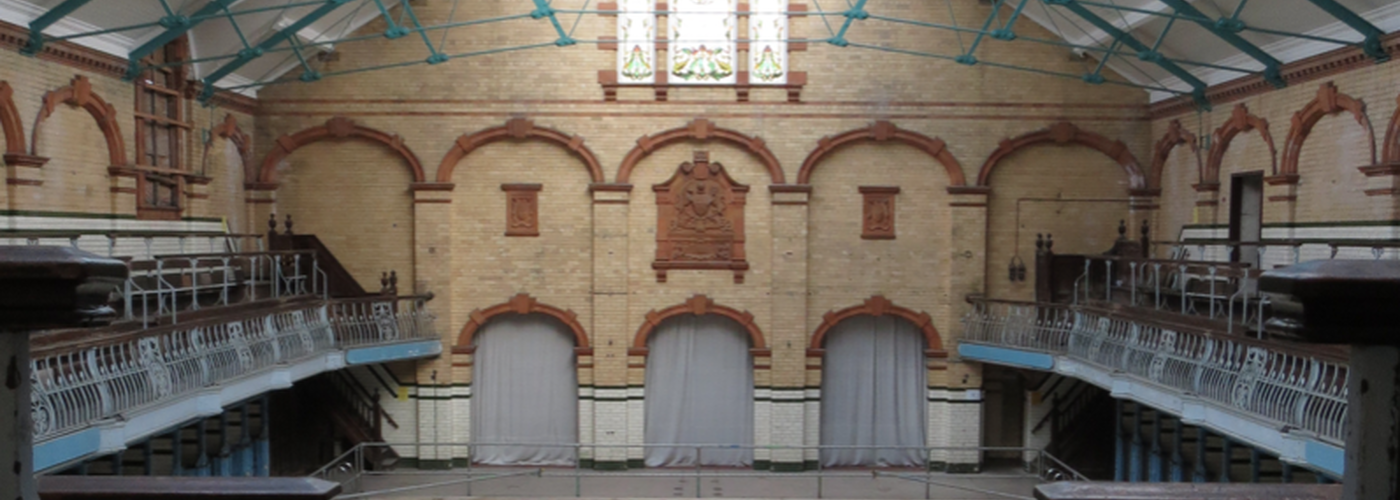We take a look at some of the films featuring Manchester buildings and backdrops
SOME cities just look like a living, breathing film set as you wander the streets; New York, Las Vegas, London, Paris with their iconic buildings and instantly recognisable sites, for example… but chances are you might not think the same about Manchester. As it happens, the city has been used numerous times as the backdrop to blockbuster movies and TV shows – from Alfie (High Street) to Years and Years (20 Stories’ building No1 Spinningfields).
It’s not just Manchester-based TV series like Coronation Street, Cold Feet and Life On Mars, or films like 24-Hour Party People, Spike Island and Control that use city locations – Manchester has even been rendered unrecognisable when it has been dressed up to depict somewhere totally different like the Big Apple or the Big Smoke.
Manchester is rich in heritage and attracts a large number of producers from around the world including Hollywood
So what’s the appeal? We asked Jasen Grindrod, a Manchester-based 'fixer' (that’s not a sinister Tarantino-type character, it’s a local production and location manager.) He told us: “I’m a born and bred Mancunian and I have a huge passion for the city and what it as to offer in terms of locations. The best part of my job is seeing a Manchester backdrop on large Hollywood blockbusters like Captain America. The worst part is sometimes the weather can be very unpredictable. I advise producers to pack a rain coat.”
He goes on: “Manchester is rich in heritage and attracts a large number of producers from around the world including Hollywood. The architecture alone around the Northern Quarter is like 1940s New York. Other locations like the historic Manchester Town Hall are a fantastic backdrop for a gothic scene. Filming in Manchester can be a lot easier to manage in terms of logistics like road closures than filming in a city like New York.”
Here are some of the landmark Mancunian buildings and streets you’re used to walking past that have been ready for their close-up so far…
Manchester Town Hall, Albert Square
Manchester’s 19th-century town hall has long been considered a sparkling jewel in the crown of the city and the imposing Gothic masterpiece has doubled for the Houses of Parliament several times, partly because filming for movies or TV is not generally allowed inside the London venue. The Margaret Thatcher biopic The Iron Lady, starring Meryl Streep, Sherlock Holmes (the film), starring Robert Downey Jr, and 2017’s Darkest Hour, starring Gary Oldman as Winston Churchill, all used the Town Hall to depict Parliament – proving it to be a pretty impressive dopplegänger for the House of Commons. Manchester Town Hall was also used to conjure up Victorian times in the movie version of Mary Shelley’s novel Frankenstein starring Harry Potter actor Daniel Radcliffe and Shameless (another Manchester-filmed show) star James McAvoy.
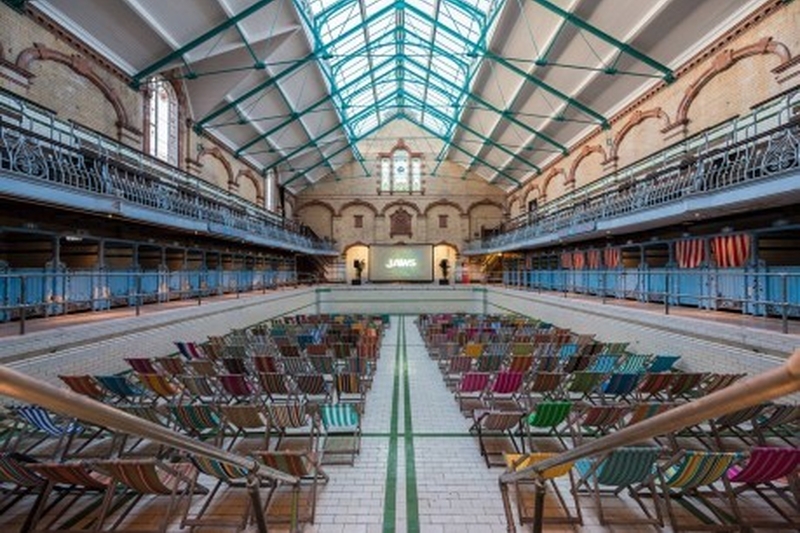
Victoria Baths, Hathersage Road, Chorlton-on-Medlock
Designed by Manchester’s first City Architect Henry Price, this magnificent Edwardian Grade II*-listed building was closed for swimming in 1993 and has since been used for events and filming. The iconic building, built in 1906, appears in two scenes in ITV drama Mrs Biggs, about the Great Train Robber’s wife and starring Sheridan Smith. The offices where the future Charmian Biggs works when she first meets Ronnie were shot in Victoria Baths’ wood-panelled rooms with the dazzling stained-glass windows clearly visible. One of the three drained pools was also used to depict the visiting area of the prison where the was holed up. The pool, this time filled with water, was also where Benedict Cumberbatch’s Sherlock and Martin Freeman’s Watson confront Moriarty for a moody, atmospheric scene at the end of series one of Sherlock (the TV series) in 2010. Scenes for Peaky Blinders (which also uses London Road Fire Station and other Manchester locations) see Victoria Baths’ shiny green tiles and mosaic floors feature as Cillian Murphy goes through his paces.
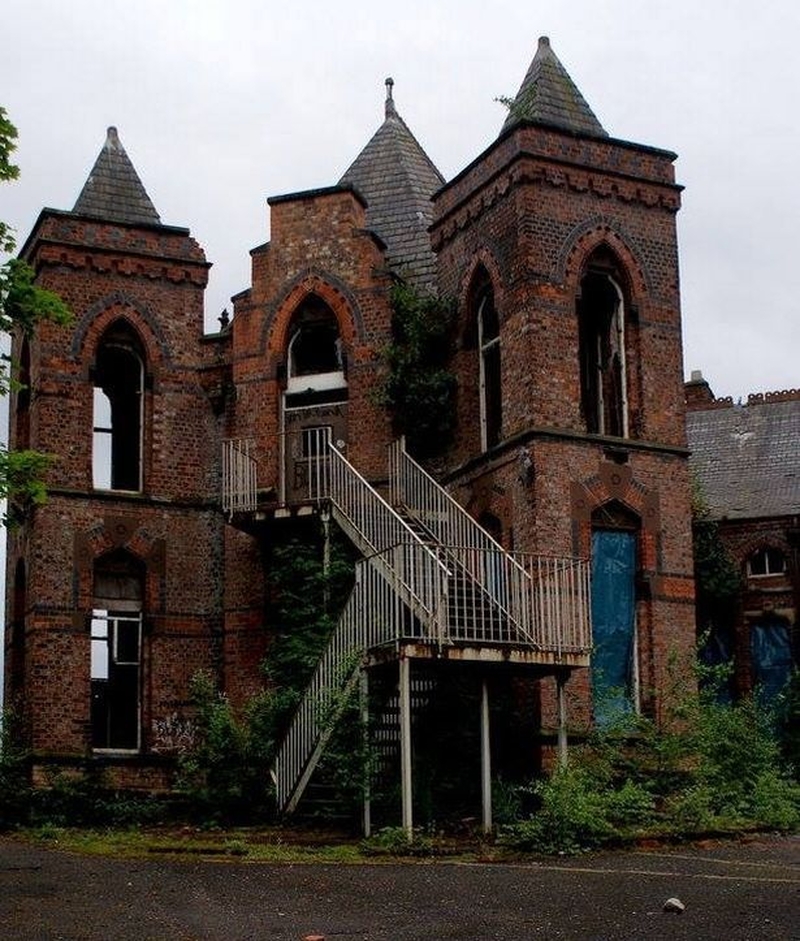
Barnes Hospital, Barnes Way, Cheadle
No longer a hospital but apartments inside the actual building and family houses in the grounds, the Gothic Grade II-listed Barnes Hospital on the edge of Cheadle once topped a list of the ‘15 creepiest abandoned places in Britain’. Closed in 1999, it was the perfect location for 1970s release Let Sleeping Corpses Lie, and critics approvingly described it as ‘a very bleak place indeed, full of sinister quietness’. As if it wasn’t creepy enough, in 1974 director Jorge Grau and his crew turned the derelict hospital into a fictional Manchester Morgue to shoot the spooky Spanish-Italian film. The B-list flick tells the torrid tale of two overseas tourists in England who are harassed by local police, believing them to be involved in a series of killings; 44-year spoiler alert – it transpires to actually be the work of zombies. The eerie existence didn’t put buyers off though with the apartments being snapped up almost overnight last year.
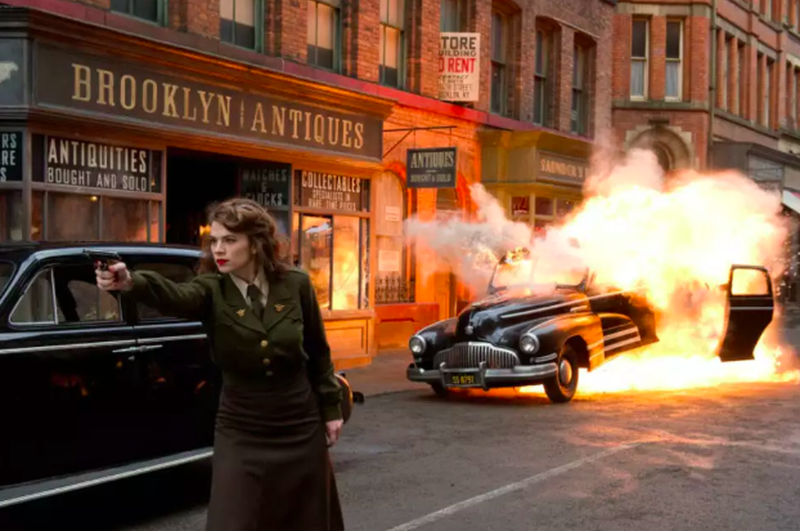
The Northern Quarter, Manchester
The pre-war architecture and authentic redbrick buildings of the Northern Quarter have made the area a firm favourite with filmmakers over the years. Its gritty, urban feel has made it easy to transform into New York in more than one film – with movie giants Marvel using Dale Street as their first-ever location outside the US, turning it into 1940s New York for Captain America. The Manchester street was the scene of a car chase with period American cars brought in and fire escapes and New York-style street signs dressing the set especially for the shoot. Scenes from Big Apple-based flick Alfie, starring Jude Law, along with the movie version of Sherlock Holmes have also been shot in the atmospheric streets.
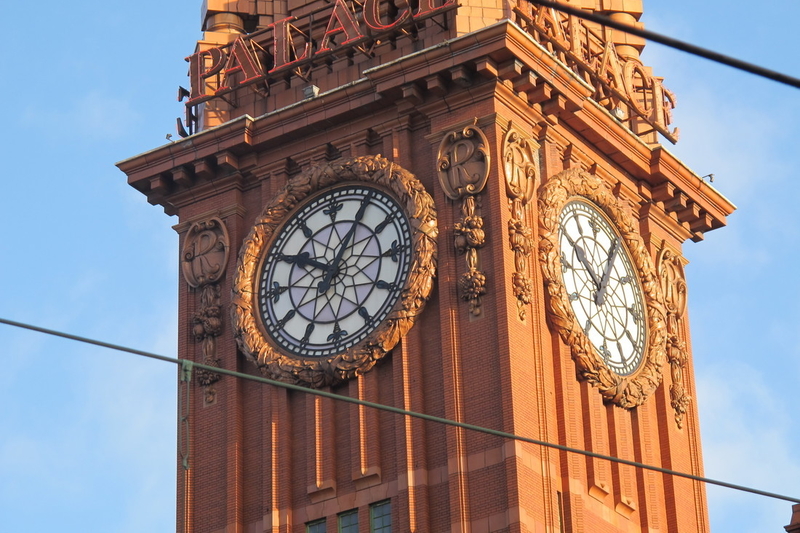
The Principal Hotel, Oxford Street
The 1960 black-and-white movie Hell Is A City is a cult classic among Manchester film buffs, who have labelled it Manc Noir. It was filmed all over Manchester and its outskirts, but the most famous scene was shot on the roof of the (then) Palace Hotel, since renamed The Principal. As the film was made in the 1960s, it offers a great opportunity to take a look at what the city looked like back then, with many of the buildings popping up in the film no longer existing (replaced by a hell of a lot of new ones), but the redbrick home to Refuge as recognisable then as now.





